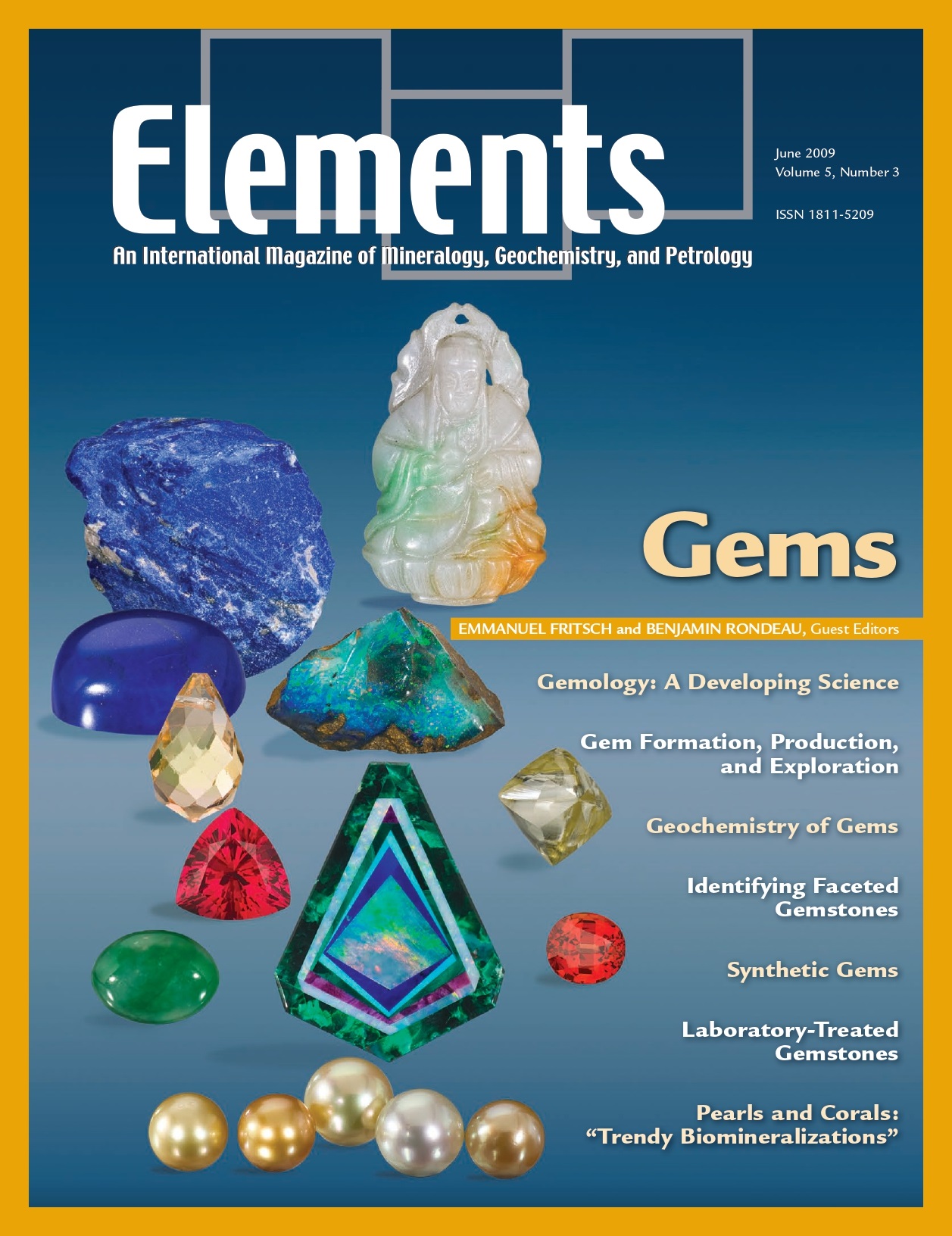
Bentonites – Versatile Clays, April 2009, Vol. 5, No. 2
June 28, 2024
Cosmochemistry, February 2011, Vol. 7, No. 1
June 28, 2024Gems, June 2009, Vol. 5, No. 3
$20.00
Most gems are natural minerals, which, although scarce and small, have a major impact on society. Their value is directly related to proper identification.
Gems
June 2009, Vol. 5, No. 3
Most gems are natural minerals, which, although scarce and small, have a major impact on society. Their value is directly related to proper identification. The determination of the species is key, of course, and must be done non-destructively. This is where classical tools of mineralogy come into play. However, other issues are paramount: Has this gem been treated? Is it natural or was it grown in a laboratory? For certain varieties, being able to tell the geographical provenance may enhance value considerably. These issues necessitate cross-linking the formation of gems with their trace-element chemistry. These unusual mineralogical and geochemical challenges make the specificity of gemology, a new and growing science, one of the possible futures of mineralogy.
Why You’ll Love Elements Magazine:
- Expert Contributors: Articles written by renowned researchers in the field of geoscience.
- Engaging Content: Join a community of readers who are passionate about Elements.
- Exceptional Quality: Each issue is printed on high-quality paper with stunning visuals and detailed illustrations that bring complex scientific concepts to life.
Order your copy of the June 2009 issue of Elements magazine today and uncover the beauty of gems.
Related products
-
On The Cutting Edge: Teaching Mineralogy, Petrology, And Geochemistry, April 2007, Vol. 3, No. 2
$20.00New advances in research on learning have important implications for teaching mineralogy, petrology, and geochemistry. Effective instructional practices are increasingly student centered, address diverse student learning styles, and employ a variety of active-learning strategies.
-
Arsenic, April 2006, Vol. 2, No. 2
$20.00Arsenic is an element known throughout history as a classic poison. Currently, very small but highly significant concentrations of this element in drinking water supplies are causing massive health problems to many millions of people in some of the world’s poorest nations, and more localised sources related to mining and processing are also a concern.
-
Fluids in Planetary Systems, January 2005, Vol. 1, No. 1
$20.00Water and other geofluids play an important role in the geochemical and rheological evolution of the Earth and other bodies in the solar system. These fluids are responsible for the formation of hydrothermal mineral deposits, affect eruption behavior in volcanic systems and the geophysical properties of the mantle, and significantly affect the way in which rocks deform and fracture.




